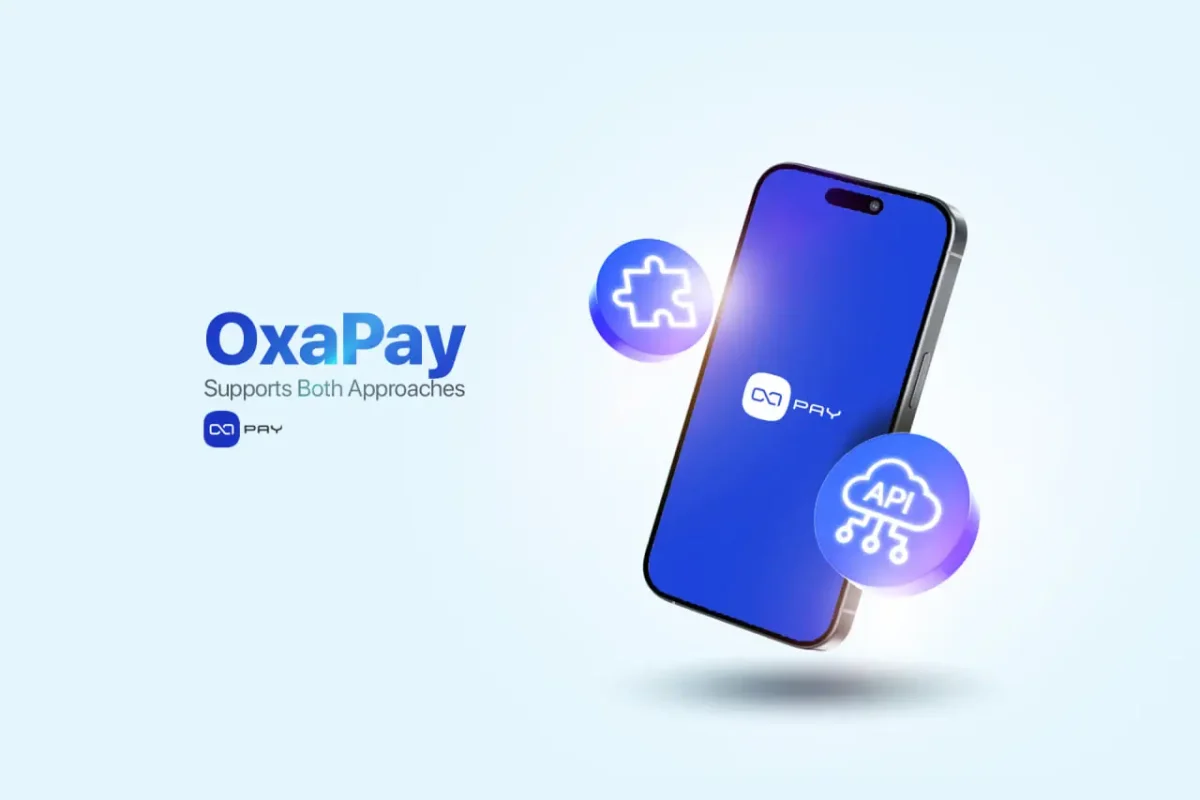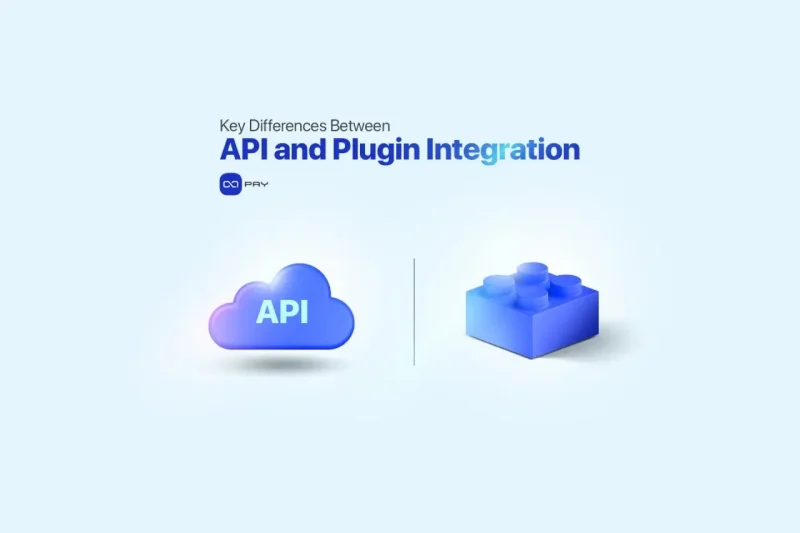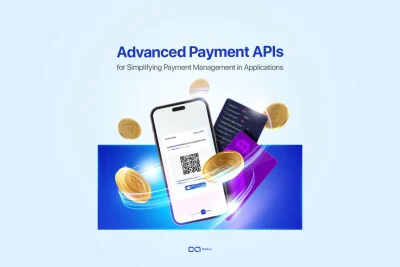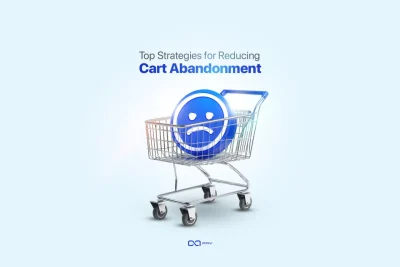选择 API 集成还是插件集成不仅仅是一个技术决策,它还会影响您的平台如何连接到支付服务和第三方系统。这一选择直接影响您企业未来所拥有的灵活性、速度和控制力。.
有些团队希望完全掌控每一次交互和数据流。而另一些团队则需要一种开箱即用、无需过多干预的可靠解决方案。本文将详细分析 API 集成和基于插件的解决方案之间的关键区别,尤其针对以下情况: 加密支付系统让您清楚地了解哪种方法适合您的产品、团队和长期目标。
什么是应用程序接口集成?
一个 应用程序接口(API) 允许两个系统通过定义的规则直接通信。使用应用程序接口时,您需要编写自定义代码,将您的网站、应用程序或后台系统连接到另一项服务。
应用程序接口集成的主要特征:
- 定制:开发人员决定集成的外观、行为和响应。
- 灵活:您可以创建量身定制的解决方案,以满足复杂的需求。
- 可扩展:应用程序接口允许跨多个系统和工作流程进行整合。
- 需要开发技能:API 集成需要开发人员熟悉 HTTP 请求、JSON、webhooks、身份验证等。
使用实例
一家公司整合了 加密支付网关 API 以生成发票、监控交易状态并触发企业资源规划系统中的自动工作流程。
什么是插件集成?
A 插头 是一种预制软件扩展,可为平台(如 WordPress、WHMCS、PrestaShop 或 ClientExec)添加特定功能。插件的安装和配置只需极少的技术工作。
插件集成的主要特征:
- 快速部署:通常只需几分钟就能完成基本设置。
- 方便用户:专为非开发人员或技术资源有限的企业设计。
- 特定平台:为特定的内容管理系统、商店生成器或托管面板量身定制。
- 灵活性较低:自定义选项仅限于插件的内置功能。
使用实例
WooCommerce 商店安装了一个 接受 USDT 支付的插件 通过加密网关,无需编写任何一行代码。.
核心技术差异:应用程序接口与插件
| 方面 | 应用程序接口集成 | 插件集成 |
| 设置时间 | 需要人工编码、测试和部署 | 通常可在指导下快速安装 |
| 控制 | 完全控制集成的每个部分 | 仅限于插件设置和内置选项 |
| 定制 | 高档,完全定制 | 中等偏低,取决于插件功能 |
| 需要开发人员 | 是 | 通常不会(基本的管理知识就足够了) |
| 维护 | 您可以维护自己的代码库 | 插件更新由提供商管理 |
| 安全处理 | 您必须实施所有安全最佳实践 | 提供商提供内置安全功能 |
| 缩放和扩展 | 可轻松扩展更多端点 | 较难扩展到默认用例之外 |
何时使用应用程序接口?

在应用程序接口和插件集成之间做出选择取决于您的平台、资源和业务需求:
✅ 使用 API 时...
- 您拥有一支内部开发团队
- 您的集成必须高度定制化
- 您需要同时连接多个系统
- 您希望完全控制逻辑和安全
✅ 使用插件时...
- 您使用 WordPress、WHMCS 或 PrestaShop 等平台
- 您需要快速可靠的解决方案
- 您没有可用的技术资源
- 您的需求与插件的功能相匹配
如果您仍不确定,请考虑以下几点:如果您优先考虑的是速度、简便性或有限的技术资源,请从插件开始。它可以让您快速上线,并在不投入大量资金的情况下测试加密货币支付流程。另一方面,如果您的业务需要与内部系统深度集成、详细的报告、自定义逻辑或大容量处理,则应选择 支付 API 从长远来看,这将对你更有利。
最终,最佳选择取决于您需要多少控制权、您希望多快启动以及您的支付基础设施应该有多灵活。
开发者体验:应用程序接口与插件
从开发人员的角度来看,使用应用程序接口的体验与使用插件截然不同。
应用程序接口的复杂性和控制
API 集成提供了最大的控制权,但也带来了复杂性。开发人员需要管理端点、身份验证(例如 API 密钥或令牌)、错误处理以及通过 Webhook 实现的实时支付更新。这种方法需要周密的规划、清晰的文档和测试环境,尤其是在处理加密货币支付等敏感流程时。对于经验丰富的团队而言,API 是一种强大的工具,可以构建完全符合自身需求的功能,并与内部系统和业务逻辑无缝衔接。.
利用插件简化和提高速度
相比之下,插件集成旨在简化操作。大部分逻辑,例如生成发票、同步付款状态或显示用户消息,都已由插件自身处理。开发人员可以专注于配置、样式或轻量级定制,而无需从头开始构建。这缩短了开发时间,并最大限度地降低了生产环境中出现错误的几率。.
整合所有权的差异
关键区别在于所有权:
使用 API,开发团队可以掌控集成的整个生命周期。而使用插件,服务提供商负责维护、更新和平台兼容性,让您的团队能够专注于产品本身。.
无论您是想要完全定制的解决方案,还是只想要一个可运行的解决方案,开发人员的经验都应与您团队的能力和业务模式的复杂性相匹配。
性能和可扩展性考虑因素
在选择 API 集成还是基于插件的集成时,性能和可扩展性是关键因素,尤其是对于处理频繁交易、用户量大或工作流程复杂的企业而言。.
为什么应用程序接口在负载情况下性能更佳
基于 API 的系统在高负载环境下往往表现更佳。由于它们直接与后端通信,不受第三方平台的限制,因此可以优化流程的每一层,从数据库调用到请求处理、缓存和排队。API 非常适合需要动态扩展、每天处理成百上千笔交易或在库存、发票和会计等服务间并行运行的平台。.
利用应用程序接口进行高级优化
此外,应用程序接口允许您将繁重的操作卸载到外部系统或微服务,通过异步处理提高响应速度,并在不影响核心集成的情况下有选择地只升级系统的一部分。
另一方面,插件在很大程度上依赖于主机平台(如 WordPress、WHMCS 或 PrestaShop)的结构和限制。虽然精心打造的插件可以为中小型工作负载提供快速性能,但它们往往受到以下因素的限制:1:
• 共享托管环境
• 特定于平台的执行流程
• 有限的内存和处理控制
• 升级期间的版本兼容性问题
使用插件的扩展挑战
随着系统复杂性或交易量的增长,插件可能需要变通方法、额外监控,甚至部分迁移到基于 API 的解决方案以执行特定任务。.
总而言之,如果您的平台预计会快速增长,或者加密支付是更广泛的自动化基础设施的一部分,那么 API 集成可以提供更好的性能调优和长期可扩展性。插件仍然是一个很好的起点,但在高需求场景下,最终可能会达到架构极限。.

OxaPay 如何支持这两种方法
OxaPay 旨在满足各种规模企业的需求,无论他们需要完全的开发控制权还是更倾向于开箱即用的解决方案。为了满足这些多样化的需求,该公司提供强大的功能。 加密支付 API 以及一套全面的实用、可立即投入生产的 加密支付插件.
使用 OxaPay API 进行完全控制
对于开发团队而言,OxaPay 提供了一套强大且文档齐全的 API,使他们能够完全掌控加密货币支付流程的各个方面。这包括发票生成、实时交易监控、回调自动化、高级支付配置以及对混合或少付交易的支持,所有这些都可以通过代码实现。.
轻松与 OxaPay 插件集成
对于没有内部开发人员的企业或寻求快速便捷设置的用户,OxaPay 提供一系列现成的插件。这些插件专为 WooCommerce、WHMCS、PrestaShop 等主流平台打造,让您只需极少的配置即可接受加密货币支付,无需任何编码。它们是希望快速安全地启用加密货币交易的在线商店店主、自由职业者和服务提供商的理想之选。.
适用于热门平台的即用型插件
OxaPay插件生态系统目前支持:
• WooCommerce
• WHMCS
• WISECP
• ClientExec
• 布莱斯塔
• 轻松数字下载
• PrestaShop
• 付费会员专业版
• 重力表格
• VirtueMart
• 以及更多
适合每种商业模式的灵活选择
无论需要完全定制的后端集成还是简单易用的插件,OxaPay 都能提供可靠灵活的加密货币支付普及途径,并在所有解决方案中优先考虑性能、安全性和可访问性。.
结论
API 和插件都是功能强大的工具,但它们的用途各不相同。如果您的业务需要速度和简洁性,插件是最佳选择。如果您需要深度定制、高级控制或可扩展的系统,API 则能提供您所需的灵活性。.
在决定之前, ,评估您的技术资源、平台限制以及您想要提供的用户体验。.
想要探索这两种选择吗?
回顾 支付 API 文档 和 商户服务概述 完全控制构建,或探索 插件集成指南 和 电子商务插件和应用程序页面 开始使用现成的工具。控制、可扩展性和易于实施。.




